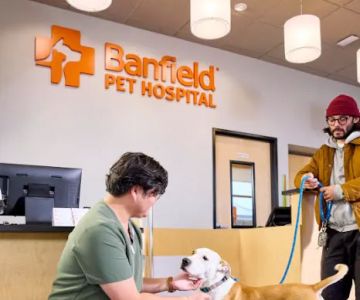How to Tell If My Dog Is in Pain: Understanding the Signs and Symptoms
- 1. Understanding Dog Pain
- 2. Common Signs of Pain in Dogs
- 3. Behavior Changes as Indicators of Pain
- 4. How to Manage Pain in Dogs
- 5. Consulting a Veterinarian
1. Understanding Dog Pain
Dogs, like humans, can experience pain due to injuries, diseases, or conditions such as arthritis. However, dogs cannot vocalize their discomfort the way humans can, which makes it important for pet owners to recognize subtle signs of pain. Understanding dog pain and its causes is the first step in providing your dog with the appropriate care and comfort.
2. Common Signs of Pain in Dogs
There are several physical and behavioral indicators that can help you determine if your dog is in pain. These include:
1. Vocalizing More Than Usual
If your dog starts whining, barking, or howling more than usual, it could be a sign that they are experiencing discomfort. Dogs will often vocalize to express distress or pain, especially if they cannot escape or avoid the painful stimulus.
2. Licking, Biting, or Scratching Specific Areas
Excessive licking, biting, or scratching at a particular area of the body is another common sign of pain. This behavior may occur when a dog is trying to soothe an injury, wound, or arthritic joint.
3. Changes in Appetite
Pain can cause dogs to lose their appetite or be reluctant to eat. A decrease in food or water intake could be a sign of discomfort, particularly if it’s accompanied by other signs of distress.
4. Shifting Posture or Limping
If your dog is limping or avoiding putting weight on a particular leg, it may be experiencing joint pain, bone fractures, or muscle strain. Dogs may also assume unusual postures to avoid putting pressure on the painful area.
3. Behavior Changes as Indicators of Pain
Behavioral changes are often a significant indicator that your dog is in pain. Some of the more common changes you may notice include:
1. Increased Aggression
If your dog suddenly becomes more aggressive or snaps at you or others, it might be a sign that it is in pain. Pain-induced aggression often occurs when a dog is touched in a sensitive area or feels threatened.
2. Withdrawal or Hiding
Many dogs will seek solitude when they’re in pain. If your dog is hiding more than usual or avoiding social interactions, it could be a sign that it’s not feeling well. This behavior is especially common in dogs with chronic pain or illnesses.
3. Restlessness or Trouble Sleeping
Pain often prevents dogs from resting comfortably, leading to increased restlessness. If your dog is unable to settle down, pacing around or having trouble finding a comfortable position, it could indicate pain or discomfort.
4. How to Manage Pain in Dogs
Once you’ve identified that your dog is in pain, it’s important to take steps to manage their discomfort. Here are a few methods for managing pain in dogs:
1. Consult Your Veterinarian
Your veterinarian can perform a thorough examination to identify the cause of your dog’s pain. Based on the diagnosis, your vet may recommend medications, physical therapy, or other treatments to help alleviate discomfort.
2. Pain Relief Medications
There are several types of pain relief medications available for dogs, including non-steroidal anti-inflammatory drugs (NSAIDs) and opioids. Always consult with your vet before administering any medication to ensure it is safe and appropriate for your dog.
3. Comfort and Rest
Make sure your dog has a quiet, comfortable place to rest. Providing soft bedding and minimizing activity will help your dog recover more quickly. Avoid any activities that could exacerbate their pain.
5. Consulting a Veterinarian
If you suspect your dog is in pain, the best course of action is to consult with a veterinarian as soon as possible. A professional can accurately diagnose the cause of the pain and recommend the best course of action to improve your dog’s quality of life.
For more information or to schedule an appointment with a trusted veterinarian, visit Hidden Brook Veterinary.











